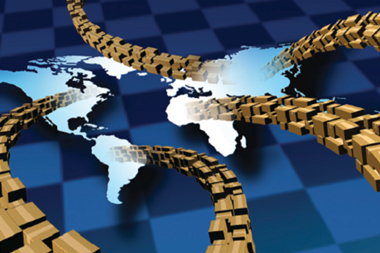Both disclosure and non-disclosure carry reputational risks for businesses

The UK Modern Slavery Act came into force on 29 October 2015. Under the new requirements, businesses must publish a Slavery and Human Trafficking Statement, outlining which steps the company has taken to ensure slavery and human trafficking is not taking place in their own operations and their supply chain.
It has been just over a year since the introduction of the Act, but compliance levels are still far from optimal.
“Many businesses appear to be unwilling or unable to fully disclose their efforts to ensure that slavery and human trafficking is eliminated from their global operations and supply chain,” Sarah Kerrigan, head of human rights strategy at global risk consultancy Verisk Maplecroft, says. “While the UK Government has gone to great lengths to communicate recommended reporting content, few Modern Slavery and Human Trafficking Statements adhered to the recommended guidelines.”
Reports have shown that 35% of statements failed to disclose information about their risk assessment procedures, and a further 75% chose not to outline the areas of their business and supply chain most exposed to modern slavery.
“These deficiencies reveal a lot about the dilemma businesses are facing with the issue of modern slavery,” Kerrigan explains. “If companies fail to say exactly what they’re doing to eradicate modern slavery from their supply chains, they may increase their reputational risks by giving the impression that they are not committed to tackling the problem. If, on the other hand, they disclose the risks they know about, companies may actually increase, rather than decrease, their legal and reputational risks.”
Verisk Maplecroft’s Modern Slavery Index reveals corporates are facing a ‘high’ or ‘extreme’ risk of association with modern slavery in 115 countries, with manufacturers and commodity producers in Asian and African countries posing the greatest risk to firms.
“The Asian heavyweight exporters of China and India feature in the ‘extreme risk’ category, alongside important natural resource hubs, including DR Congo, Iran and Côte d’Ivoire. The association of slavery with hard and soft commodity production and low-skilled manufacturing deep in firms’ supply chains means that the highest risks are faced by the retail, garment, agriculture, ICT and automotive sectors,” Kerrigan says.
Firmly on the European agenda
The Modern Slavery Act is a global-leading piece of legislation, but the UK is not alone in its efforts to combat slavery and forced labour. New legislation is being considered in France and Switzerland, which would require businesses to both disclose and implement what they are doing to tackle modern slavery (see box).
This clearly demonstrates that corporate accountability is firmly on the agenda in Europe, Kerrigan says. “If businesses want to keep pace with this emerging legislation and mitigate their reputational, financial and legal risks, it is vital that they start investing and enhancing their due diligence systems now.”
However, many corporates struggle to effectively assess their supply chains for modern slavery. Few companies have visibility beyond their first tier of suppliers, meaning that many companies are ignorant of the risks that lie further down their supply chains.
David Tate, UK retail, food and beverage practice leader at Marsh explains: “Complex supply chains that span across multiple sectors and geographies make it challenging to identify a breach of the Act, which can represent significant reputational and strategic risks for the business. The penalties and sentencing can range from personal conviction, confiscation of assets, and the payment of compensation to victims, as well as the damage to the brand and reputation.”
To ensure they do not expose themselves to reputational damage, Tate recommends organisations to take a disciplined approach in working with their suppliers. “The risk management process should include gaining end-to-end supply chain visibility, ensuring procurement and processes are aligned, establishing clearly articulated policies and rules, and finally, setting key performance indicators.”
He adds: “End-to-end supply chain visibility is critical. Companies should implement a programme to identify specific commodities or sectors where forced labour or extreme exploitation are apparent. It’s not enough to simply focus on tier-one suppliers; deep engagement with tier-two and tier-three suppliers is also important.”




















No comments yet